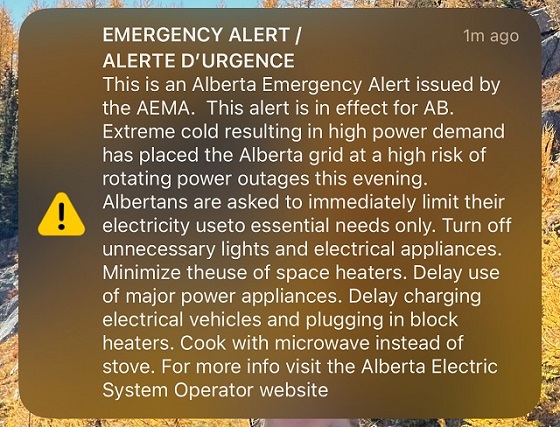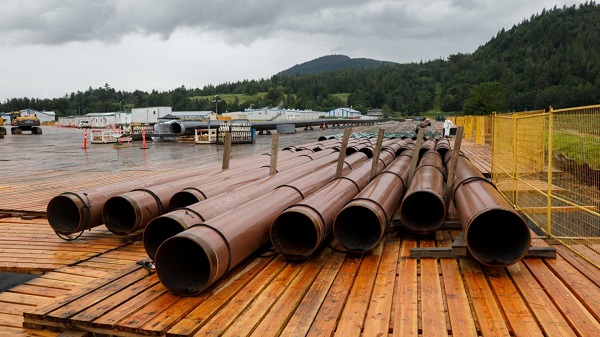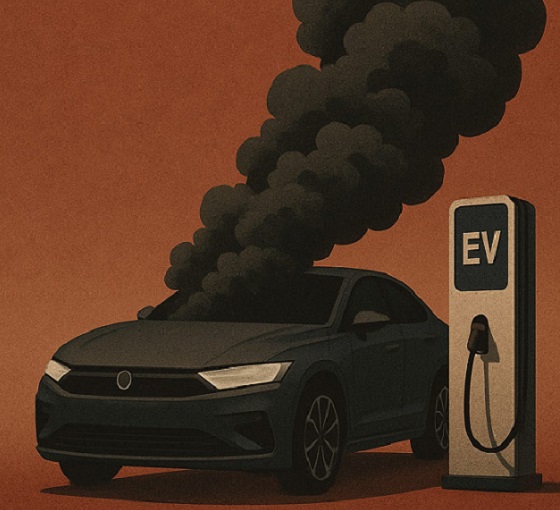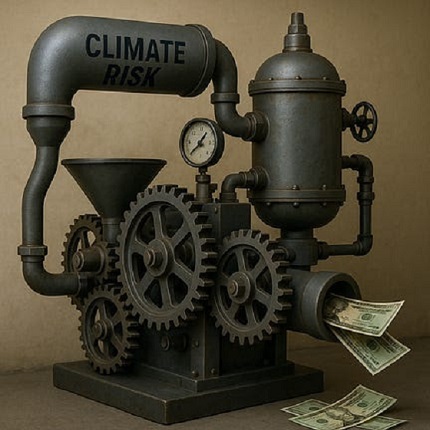Energy
No calling in sick or waiting for a nice day – The grid has to perform on the worst of them

From the Frontier Centre for Public Policy
By Terry Etam
Saturday night, the middle of the cold snap, was something to be endured
Saturday night, the middle of the cold snap, was something to be endured. Things break at -36 degrees. A quick run to the grocery store was rerouted by a fleet of city vehicles tearing up the street in a considerable manner, most likely chasing a broken water main or some such. Imagine being without water on a night like that.
Half an hour later it got worse – the provincial grid operator issued an alert for people to “immediately limit their electrical use to essential needs only.”
Keep in mind the staggering circumstance, and location, of that alert: Alberta. Even the province’s biggest naysayer would have to admit that the province is an energy juggernaut, blessed with resources most of the world can only dream of, including and especially energy.
If power consumption levels were not reduced, there could have been rolling blackouts. Anyone care to imagine what that would have been like at -35 degree temperatures?
Hopefully every single voter in Canada, and the US for that matter, is paying attention. The false prophecies of utopian energy transitions visions are, quite clearly, dangerously false.
The media feeds you dumbed-down pablum; don’t take it at face value. Instead of listening to blathering about “new installed capacity”, pay attention to actual output. In extreme cold, wind and solar output fall to zero, or very close. It doesn’t matter if there are a billion gigawatts of ‘capacity’ installed.
Everyone needs to understand the fundamental issue that was best described by Nassim Taleb via his turkey analogy. A turkey has 364 days of a very good life, followed by one very bad day come Thanksgiving. It is the bad day that matters, not 364 good ones. A deadly day is a deadly day.
It’s the same with renewables penetration, and how it makes the news ‘on the good days’. Activists and simplistic policymakers (but I repeat myself) tout how a particular jurisdiction may have at such and such a time sourced “xx percent” of power from renewables. Yay, look at the progress, marching ever higher. But it’s not what it sounds like. It doesn’t matter if a country or state or province gets 80% of its power from solar at the peak of a good sunny day, nor if 80% comes from wind on a particularly windy day. Those are misleading numbers, because the system must be fully capable of meeting peak demand every day, and not just ‘on a good day’.
According to AESO, the provincial grid operator, Alberta has 4,481 MW of wind power capacity. At the peak of last weekend’s deepfreeze, it was producing about 1/3 of one percent of that total. Not just useless, but far worse: useless when needed exactly the most.
What matters is: how does the system perform at peak times – what is going to show up on demand?
Just like everyone else that’s trying to bring rationality to this conversation, I need also point out that wind and solar are welcome additions, in moderate amounts, sited where they do the least damage, and as supplements to a grid.
But that’s where the conversation needs to get serious. The real danger out there are people that want an energy transition so badly, or are employed as ‘climate architects’ such that their career depends on it, who sweep some mighty big things under the rug.
“We just need more storage, then wind and solar will be able to carry the load.” Not possible, not if batteries are the vision. Imagine a day’s worth of battery power supply for the entire province. Or two days. The cost would be off the charts, and, then after two days of ‘usage’, how would the batteries get recharged if the cold spell persisted more than a few days? Is that the kind of backup anyone would accept? We’ll have power again if the wind picks up strongly and consistently for the next week, if not, well, good luck?
“Sure we can handle an all-EV world because users can charge at night.” I’ve seen this argument now and then, based on some simplistic studies that show, correctly, that financial enticements can get people to charge EVs at off peak hours. But that’s a red herring in the world we are headed for, “electrify everything”. If we do electrify even half of what we could, then peak demand will still go way up, as will our life-perched dependency on it. More EVs just mean more load. And not all EVs will shift to night charging; it is some pretty weak thinking to imagine that all EV owners will have that optionality, or live in a place that allows it, or won’t be travelling, etc. And remember that the feds’ plan is for all vehicles to be electrified. So maybe J. Consumer in suburbia can shift his EV to night charging, but what about a fleet of city buses, or Uber drivers, or forklifts, or taxis, or…the list is endless.
“We can switch to heat pumps.” This one takes the cake. Heat pumps will exacerbate the problem at the exact worst time – when it is coldest, and when power demand is highest, and when the grid is maxed out. It is the opposite of proponents who say EVs can charge at off peak hours – heat pumps will be called into full service precisely at peak hours. Taleb’s turkey again: a mass-heat-pump system will be wonderful on many days, but on the very worst day, all goes black. And cold.
There is no joy in this silly debate we seem to be in with ideologues, particularly when the threat of rolling blackouts is announced by the grid operator. But there is also no time to waste indulging people who want to rewire the grid with “well academic studies say this should work.” Set up your own commune somewhere and experiment for a few years and at least one winter cold snap, then let us know how it goes.
Wishful thinking doesn’t turn many wrenches, nor does it heat homes. Wishful thinking is not what an energy system can or should be built on. Energy is life or death in extreme weather. Ideology is the last thing that should be involved in energy supply, and yet we are up to our ears in it, a situation that is becoming dangerous.
People can see this. They may not understand how grids (and energy) work, but they know when something smells bad. That’s why federal government support is at such lows, and why distrust in the media is at such highs. Political scientists telling you “Don’t worry, we know how to design a new grid” are no match for the likes of, for example, real-world experiences such as this relayed by a gentleman named John Wright on LinkedIn: “Currently out at our cabin trying to help out our heat pumps (we run three geothermal units and they are running full out with auxiliary/ supplemental heating coils engaged). We have two propane fireplaces burning full time in addition to all the firewood that we’re also splitting and burning, and all of the burners on the cooktop are on. It’s probably about +12.5° C inside here vs -36°C outside…Everyone seems to ignore the fact that heat pumps are a huge draw on the power grid. Our power bill could easily be $1500.00 to $2000.00 for January…By the way, the power consumption and poor performance is the same in the summer when it is +36°C here.”
And finally, it is important to note that the gradual but persistent undermining of the hydrocarbon industry will have massive consequences, because hydrocarbons underpin everything we use and do. Governmental and media animosity will drive away capital (don’t wonder why dividends are such a popular thing in the oil and gas sector – capital flight in full view) and ultimately weaken a pillar of our economy. Until nuclear energy is ubiquitous, or some technological breakthrough happens, we need reliable, baseload power, which at this time in history means hydrocarbons, here and around the world. That baseload is not guaranteed, it is not a right, it is not going to be sustained if capital is chased away from it.
Voters, it’s up to you. Demand more from your politicians, but also demand better conversations from the entire energy industry as well. We owe you that.
Terry Etam is a columnist with the BOE Report, a leading energy industry newsletter based in Calgary. He is the author of The End of Fossil Fuel Insanity. You can watch his Policy on the Frontier session from May 5, 2022 here.
Automotive
Politicians should be honest about environmental pros and cons of electric vehicles

From the Fraser Institute
By Annika Segelhorst and Elmira Aliakbari
According to Steven Guilbeault, former environment minister under Justin Trudeau and former member of Prime Minister Carney’s cabinet, “Switching to an electric vehicle is one of the most impactful things Canadians can do to help fight climate change.”
And the Carney government has only paused Trudeau’s electric vehicle (EV) sales mandate to conduct a “review” of the policy, despite industry pressure to scrap the policy altogether.
So clearly, according to policymakers in Ottawa, EVs are essentially “zero emission” and thus good for environment.
But is that true?
Clearly, EVs have some environmental advantages over traditional gasoline-powered vehicles. Unlike cars with engines that directly burn fossil fuels, EVs do not produce tailpipe emissions of pollutants such as nitrogen dioxide and carbon monoxide, and do not release greenhouse gases (GHGs) such as carbon dioxide. These benefits are real. But when you consider the entire lifecycle of an EV, the picture becomes much more complicated.
Unlike traditional gasoline-powered vehicles, battery-powered EVs and plug-in hybrids generate most of their GHG emissions before the vehicles roll off the assembly line. Compared with conventional gas-powered cars, EVs typically require more fossil fuel energy to manufacture, largely because to produce EVs batteries, producers require a variety of mined materials including cobalt, graphite, lithium, manganese and nickel, which all take lots of energy to extract and process. Once these raw materials are mined, processed and transported across often vast distances to manufacturing sites, they must be assembled into battery packs. Consequently, the manufacturing process of an EV—from the initial mining of materials to final assembly—produces twice the quantity of GHGs (on average) as the manufacturing process for a comparable gas-powered car.
Once an EV is on the road, its carbon footprint depends on how the electricity used to charge its battery is generated. According to a report from the Canada Energy Regulator (the federal agency responsible for overseeing oil, gas and electric utilities), in British Columbia, Manitoba, Quebec and Ontario, electricity is largely produced from low- or even zero-carbon sources such as hydro, so EVs in these provinces have a low level of “indirect” emissions.
However, in other provinces—particularly Alberta, Saskatchewan and Nova Scotia—electricity generation is more heavily reliant on fossil fuels such as coal and natural gas, so EVs produce much higher indirect emissions. And according to research from the University of Toronto, in coal-dependent U.S. states such as West Virginia, an EV can emit about 6 per cent more GHG emissions over its entire lifetime—from initial mining, manufacturing and charging to eventual disposal—than a gas-powered vehicle of the same size. This means that in regions with especially coal-dependent energy grids, EVs could impose more climate costs than benefits. Put simply, for an EV to help meaningfully reduce emissions while on the road, its electricity must come from low-carbon electricity sources—something that does not happen in certain areas of Canada and the United States.
Finally, even after an EV is off the road, it continues to produce emissions, mainly because of the battery. EV batteries contain components that are energy-intensive to extract but also notoriously challenging to recycle. While EV battery recycling technologies are still emerging, approximately 5 per cent of lithium-ion batteries, which are commonly used in EVs, are actually recycled worldwide. This means that most new EVs feature batteries with no recycled components—further weakening the environmental benefit of EVs.
So what’s the final analysis? The technology continues to evolve and therefore the calculations will continue to change. But right now, while electric vehicles clearly help reduce tailpipe emissions, they’re not necessarily “zero emission” vehicles. And after you consider the full lifecycle—manufacturing, charging, scrapping—a more accurate picture of their environmental impact comes into view.
Alberta
The case for expanding Canada’s energy exports

From the Canadian Energy Centre
For Canada, the path to a stronger economy — and stronger global influence — runs through energy.
That’s the view of David Detomasi, a professor at the Smith School of Business at Queen’s University.
Detomasi, author of Profits and Power: Navigating the Politics and Geopolitics of Oil, argues that there is a moral case for developing Canada’s energy, both for Canadians and the world.
CEC: What does being an energy superpower mean to you?
DD: It means Canada is strong enough to affect the system as a whole by its choices.
There is something really valuable about Canada’s — and Alberta’s — way of producing carbon energy that goes beyond just the monetary rewards.
CEC: You talk about the moral case for developing Canada’s energy. What do you mean?
DD: I think the default assumption in public rhetoric is that the environmental movement is the only voice speaking for the moral betterment of the world. That needs to be challenged.
That public rhetoric is that the act of cultivating a powerful, effective economic engine is somehow wrong or bad, and that efforts to create wealth are somehow morally tainted.
I think that’s dead wrong. Economic growth is morally good, and we should foster it.
Economic growth generates money, and you can’t do anything you want to do in social expenditures without that engine.
Economic growth is critical to doing all the other things we want to do as Canadians, like having a publicly funded health care system or providing transfer payments to less well-off provinces.
Over the last 10 years, many people in Canada came to equate moral leadership with getting off of oil and gas as quickly as possible. I think that is a mistake, and far too narrow.
Instead, I think moral leadership means you play that game, you play it well, and you do it in our interest, in the Canadian way.
We need a solid base of economic prosperity in this country first, and then we can help others.
CEC: Why is it important to expand Canada’s energy trade?
DD: Canada is, and has always been, a trading nation, because we’ve got a lot of geography and not that many people.
If we don’t trade what we have with the outside world, we aren’t going to be able to develop economically, because we don’t have the internal size and capacity.
Historically, most of that trade has been with the United States. Geography and history mean it will always be our primary trade partner.
But the United States clearly can be an unreliable partner. Free and open trade matters more to Canada than it does to the U.S. Indeed, a big chunk of the American people is skeptical of participating in a global trading system.
As the United States perhaps withdraws from the international trading and investment system, there’s room for Canada to reinforce it in places where we can use our resource advantages to build new, stronger relationships.
One of these is Europe, which still imports a lot of gas. We can also build positive relationships with the enormous emerging markets of China and India, both of whom want and will need enormous supplies of energy for many decades.
I would like to be able to offer partners the alternative option of buying Canadian energy so that they are less reliant on, say, Iranian or Russian energy.
Canada can also maybe eventually help the two billion people in the world currently without energy access.
CEC: What benefits could Canadians gain by becoming an energy superpower?
DD: The first and primary responsibility of our federal government is to look after Canada. At the end of the day, the goal is to improve Canada’s welfare and enhance its sovereignty.
More carbon energy development helps Canada. We have massive debt, an investment crisis and productivity problems that we’ve been talking about forever. Economic and job growth are weak.
Solving these will require profitable and productive industries. We don’t have so many economic strengths in this country that we can voluntarily ignore or constrain one of our biggest industries.
The economic benefits pay for things that make you stronger as a country.
They make you more resilient on the social welfare front and make increasing defence expenditures, which we sorely need, more affordable. It allows us to manage the debt that we’re running up, and supports deals for Canada’s Indigenous peoples.
CEC: Are there specific projects that you advocate for to make Canada an energy superpower?
DD: Canada’s energy needs egress, and getting it out to places other than the United States. That means more transport and port facilities to Canada’s coasts.
We also need domestic energy transport networks. People don’t know this, but a big chunk of Ontario’s oil supply runs through Michigan, posing a latent security risk to Ontario’s energy security.
We need to change the perception that pipelines are evil. There’s a spiderweb of them across the globe, and more are being built.
Building pipelines here, with Canadian technology and know-how, builds our competitiveness and enhances our sovereignty.
Economic growth enhances sovereignty and provides the resources to do other things. We should applaud and encourage it, and the carbon energy sector can lead the way.
-

 Focal Points2 days ago
Focal Points2 days agoCommon Vaccines Linked to 38-50% Increased Risk of Dementia and Alzheimer’s
-

 Automotive1 day ago
Automotive1 day agoThe $50 Billion Question: EVs Never Delivered What Ottawa Promised
-

 Business2 days ago
Business2 days agoCanada invests $34 million in Chinese drones now considered to be ‘high security risks’
-

 Alberta14 hours ago
Alberta14 hours agoAlberta introducing three “all-season resort areas” to provide more summer activities in Alberta’s mountain parks
-

 Health2 days ago
Health2 days agoThe Data That Doesn’t Exist
-

 Economy2 days ago
Economy2 days agoAffordable housing out of reach everywhere in Canada
-

 Business23 hours ago
Business23 hours agoStorm clouds of uncertainty as BC courts deal another blow to industry and investment
-

 Business2 days ago
Business2 days agoThe Climate-Risk Industrial Complex and the Manufactured Insurance Crisis








